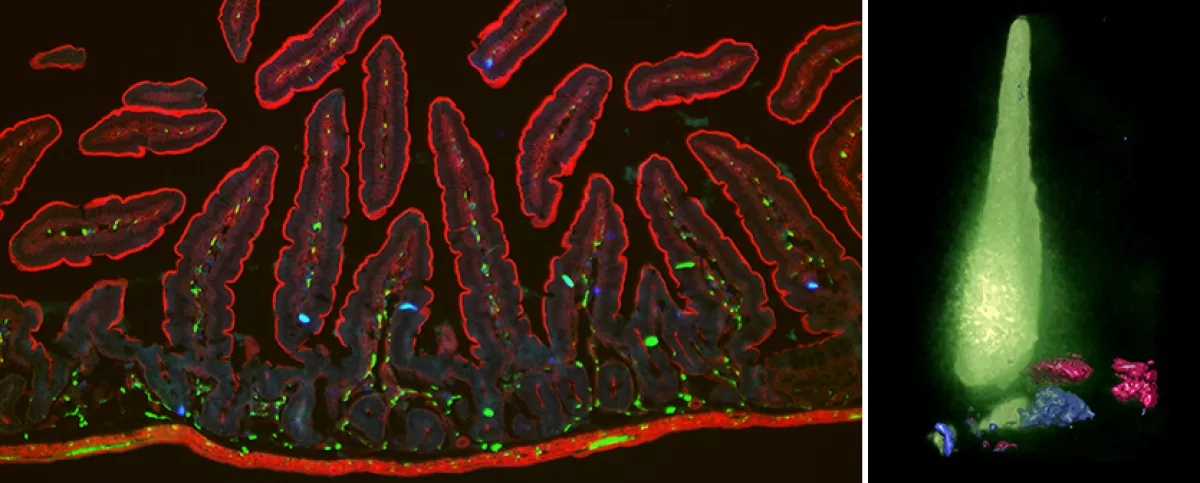Mechanisms of Intestinal Epithelial Homeostasis and Repair
The intestinal epithelium is a critical barrier that must adapt and respond to both the gut environment and the body’s immune, neurological, and endocrinological systems while simultaneously undergoing continuous self-renewal. Recent studies suggest that the remarkable regenerative capacity of the intestine is due not just to intestinal stem cells, but also arises from cellular plasticity within progenitor populations of intestinal epithelial cells. Our laboratory is interested in deciphering the molecular machinery that controls the epithelial renewal and wound healing processes and how this machinery might be leveraged to heal damaged intestines. To do this, we use a combination of genetic disease models and intestinal organoids, three-dimensional “mini-intestines” derived from patients with intestinal disorders coupled with cutting-edge molecular technologies.

Sensory Gut Epithelium
The gut contains the largest exposed surface areas of the body and must perform multiple functions related to digestion, infectious surveillance, and metabolism. Helping to coordinate these activities are enteroendocrine cells, specialized intestinal epithelial cells expressing cellular machinery for chemical and mechanical sensing and for host communication via the ‘Gut-Brain Axis.’ Our laboratory is interested in understanding how the production of these sensory cells is regulated and how they connect with host sensory machinery. Using unique experimental systems and methods, we investigate how these sensory cells are made, activated, and trigger the intestinal nervous system.

